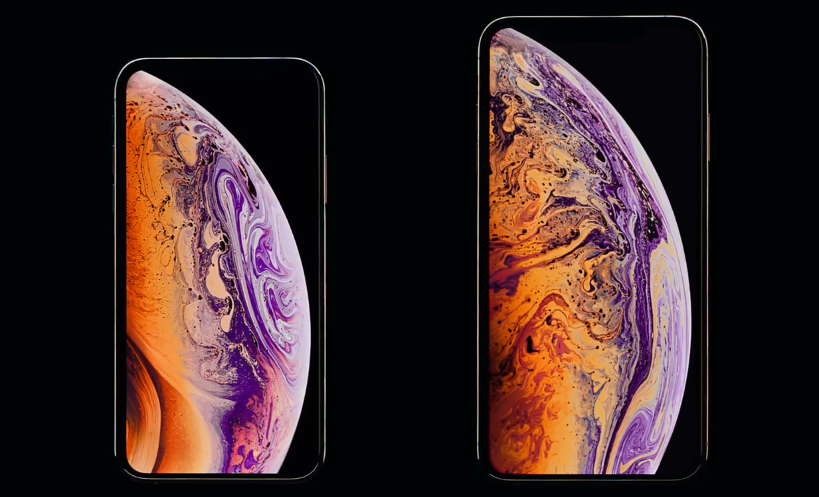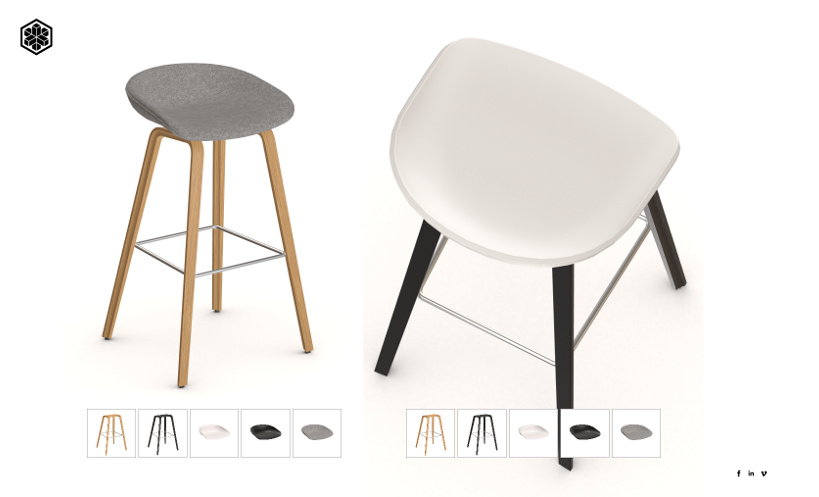3D animation - video or interactive?
We can not imagine our life without three-dimensional animation. From morning till night, we are shown all sorts of commercials, expliners, product presentations and films. Thousands of digital agencies and freelancers compete with each other, trying to create the most attractive 3D content for their clients, and they, in turn, are trying to sell their products to millions of consumers.
Here is an example of a quality three-dimensional animation. As everyone could guess, this is the presentation of the new iPhone XS.

Excellent video - it can be played on the Internet and on TV. I understand that there is a risk of being a pug barking at an elephant, but the problem is that such 3D-animation has already become a routine. To attract the attention of a modern adult with the help of 3D visualization is extremely difficult. It is even more difficult to motivate him in the end to buy the product, showing him a minute of carefully produced promotional video. To stand out from the crowd, you need something more exciting and interesting, something more like a video game than a promotional video.
')
A good example is the steampunk-style interactive teapot heater. With it, you can make a cup of tea, coffee or boiling water for Doshirak noodles. Now the question is to those who have not seen this application before. What exactly do its creators sell?

Have you ever wondered why computer games are so popular? In my opinion, the main thing here is that a gamer is no longer just a spectator, but rather a participant in events, creating his own reality. Interactive in itself is cool - just take the opportunity to rotate and scale the camera, which allows you to view content from any angle and scale. Another interesting feature of the games is non-linearity, when the user actually chooses the script and influences the storyline from beginning to end (of course, within the limits specified by the game designer).
Now let's talk about how all this can be applied to real (non-player) life. How to make your 3D-animation, visualization and promotional videos look like games from which potential customers will not be dragged away by the ears? The answer is to use real-time rendering tools instead of the traditional approach to creating three-dimensional visualization (such as VRay, Corona, etc.).
Many are familiar with Unity, Unreal Engine and other similar engines, but in our case they will not help much, as they are not optimized enough for work on the Internet (I am going to write about it in detail in a separate article). So if you are going to work on the web, you should pay attention to the specialized engines, based on WebGL technology.
Some may ask, why the web itself? The answer is simple. There is no medium and platform more convenient for content distribution than the Internet. Nowadays, customers are unlikely to like the idea of downloading and installing something - and really why, if they are used to looking for all the information on websites and in social networks. networks?
And since we focus on the Internet, we need the right tools. There are many of them, ranging from purely programmer WebGL libraries, such as Three.js and Babylon.js, to tulkits specially crafted for 3D modelers and designers, for example Verge3D. Unlike the three-dimensional monsters Unity and Unreal, these tools are written in JavaScript native to the web, have small size and memory consumption, and therefore run without any problems in any web browser, including mobile devices. There is another important advantage of native WebGL tools, namely, they make it easy to integrate 3D content with any other content on your sites.
We give an example from real life. This is an interactive furniture configurator made by a German freelancer. Click on the picture below to launch it.

So what we do. At the present level of development of web technologies, people working in the industry of three-dimensional visualization and animation, as well as their customers - companies that are present on the Internet - have a choice. They can continue to adhere to the traditional approach to creating content (of course, it does not go anywhere and will not go anywhere for a long time), or show off (in a good sense) and start entertaining its audience with interactive animation, thereby increasing the conversion and, consequently, revenue.
Here is an example of a quality three-dimensional animation. As everyone could guess, this is the presentation of the new iPhone XS.

Excellent video - it can be played on the Internet and on TV. I understand that there is a risk of being a pug barking at an elephant, but the problem is that such 3D-animation has already become a routine. To attract the attention of a modern adult with the help of 3D visualization is extremely difficult. It is even more difficult to motivate him in the end to buy the product, showing him a minute of carefully produced promotional video. To stand out from the crowd, you need something more exciting and interesting, something more like a video game than a promotional video.
')
A good example is the steampunk-style interactive teapot heater. With it, you can make a cup of tea, coffee or boiling water for Doshirak noodles. Now the question is to those who have not seen this application before. What exactly do its creators sell?

Have you ever wondered why computer games are so popular? In my opinion, the main thing here is that a gamer is no longer just a spectator, but rather a participant in events, creating his own reality. Interactive in itself is cool - just take the opportunity to rotate and scale the camera, which allows you to view content from any angle and scale. Another interesting feature of the games is non-linearity, when the user actually chooses the script and influences the storyline from beginning to end (of course, within the limits specified by the game designer).
Now let's talk about how all this can be applied to real (non-player) life. How to make your 3D-animation, visualization and promotional videos look like games from which potential customers will not be dragged away by the ears? The answer is to use real-time rendering tools instead of the traditional approach to creating three-dimensional visualization (such as VRay, Corona, etc.).
Many are familiar with Unity, Unreal Engine and other similar engines, but in our case they will not help much, as they are not optimized enough for work on the Internet (I am going to write about it in detail in a separate article). So if you are going to work on the web, you should pay attention to the specialized engines, based on WebGL technology.
Some may ask, why the web itself? The answer is simple. There is no medium and platform more convenient for content distribution than the Internet. Nowadays, customers are unlikely to like the idea of downloading and installing something - and really why, if they are used to looking for all the information on websites and in social networks. networks?
And since we focus on the Internet, we need the right tools. There are many of them, ranging from purely programmer WebGL libraries, such as Three.js and Babylon.js, to tulkits specially crafted for 3D modelers and designers, for example Verge3D. Unlike the three-dimensional monsters Unity and Unreal, these tools are written in JavaScript native to the web, have small size and memory consumption, and therefore run without any problems in any web browser, including mobile devices. There is another important advantage of native WebGL tools, namely, they make it easy to integrate 3D content with any other content on your sites.
We give an example from real life. This is an interactive furniture configurator made by a German freelancer. Click on the picture below to launch it.

So what we do. At the present level of development of web technologies, people working in the industry of three-dimensional visualization and animation, as well as their customers - companies that are present on the Internet - have a choice. They can continue to adhere to the traditional approach to creating content (of course, it does not go anywhere and will not go anywhere for a long time), or show off (in a good sense) and start entertaining its audience with interactive animation, thereby increasing the conversion and, consequently, revenue.
Source: https://habr.com/ru/post/426143/
All Articles